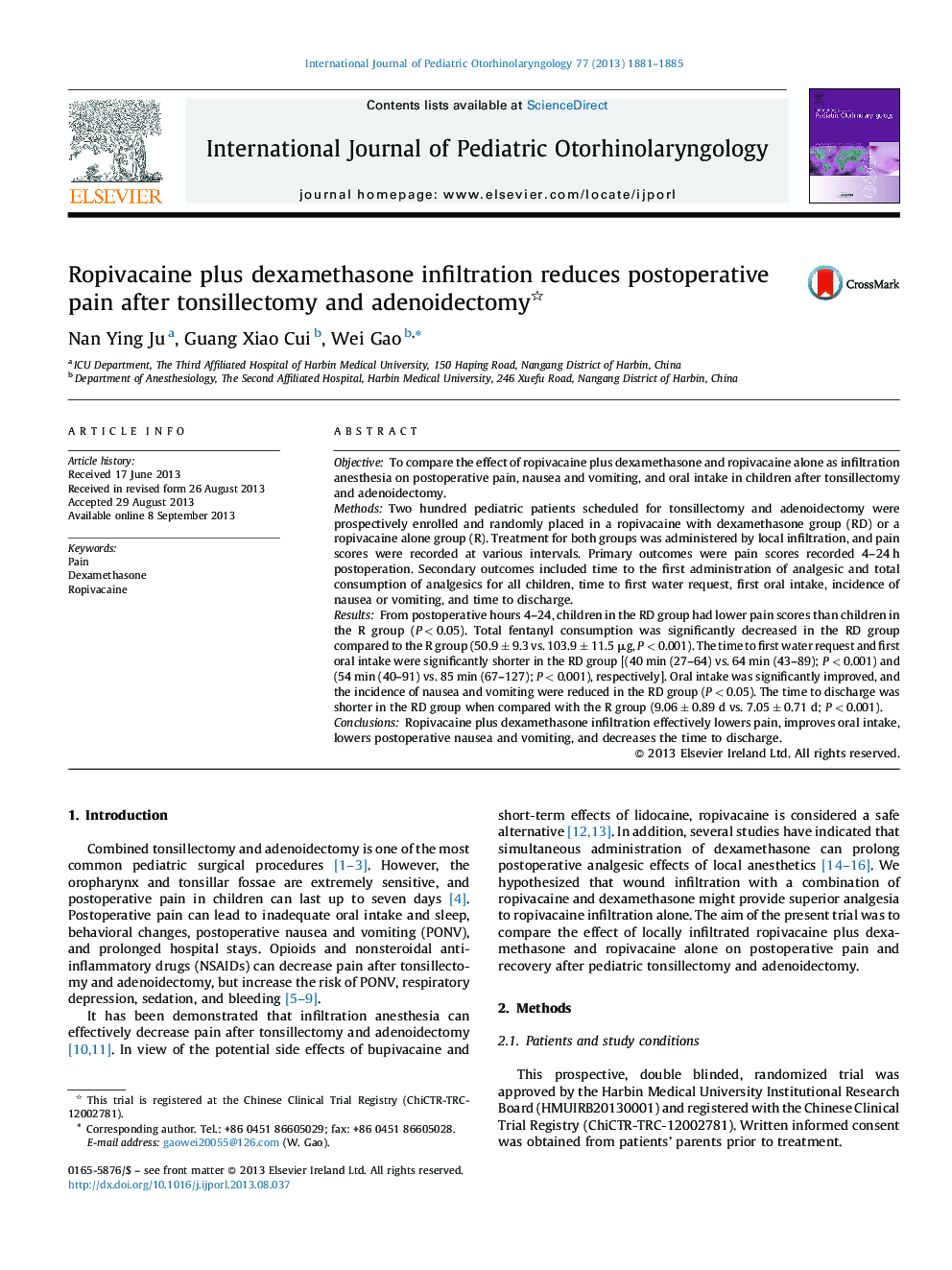| Article ID | Journal | Published Year | Pages | File Type |
|---|---|---|---|---|
| 6213970 | International Journal of Pediatric Otorhinolaryngology | 2013 | 5 Pages |
ObjectiveTo compare the effect of ropivacaine plus dexamethasone and ropivacaine alone as infiltration anesthesia on postoperative pain, nausea and vomiting, and oral intake in children after tonsillectomy and adenoidectomy.MethodsTwo hundred pediatric patients scheduled for tonsillectomy and adenoidectomy were prospectively enrolled and randomly placed in a ropivacaine with dexamethasone group (RD) or a ropivacaine alone group (R). Treatment for both groups was administered by local infiltration, and pain scores were recorded at various intervals. Primary outcomes were pain scores recorded 4-24 h postoperation. Secondary outcomes included time to the first administration of analgesic and total consumption of analgesics for all children, time to first water request, first oral intake, incidence of nausea or vomiting, and time to discharge.ResultsFrom postoperative hours 4-24, children in the RD group had lower pain scores than children in the R group (P < 0.05). Total fentanyl consumption was significantly decreased in the RD group compared to the R group (50.9 ± 9.3 vs. 103.9 ± 11.5 μg, P < 0.001). The time to first water request and first oral intake were significantly shorter in the RD group [(40 min (27-64) vs. 64 min (43-89); P < 0.001) and (54 min (40-91) vs. 85 min (67-127); P < 0.001), respectively]. Oral intake was significantly improved, and the incidence of nausea and vomiting were reduced in the RD group (P < 0.05). The time to discharge was shorter in the RD group when compared with the R group (9.06 ± 0.89 d vs. 7.05 ± 0.71 d; P < 0.001).ConclusionsRopivacaine plus dexamethasone infiltration effectively lowers pain, improves oral intake, lowers postoperative nausea and vomiting, and decreases the time to discharge.
